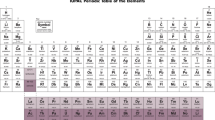Summary.
Chemists have always defined the properties of materials on the basis of the changes observed when they reacted with other substances. Whereas this approach led chemists to relational concepts such as “affinity”, “acid”, and “oxidant”, physicists made measurements of objects they considered unchanged, determining their mass, charge, dipole moment, etc. In the middle of the 18th century, the Jesuit Josip Ruder Bošcović started thinking about the way in which atoms might be present in crystals, introducing a new concept according to which atoms in condensed phases represented punctual centres of attracting and repelling forces. Josef Loschmidt became aware of these ideas through the philosopher J. F. Herbart, and it is to Loschmidt that we owe the first representation of bonds as atomic spheres penetrating one another. The term “quantum chemistry” was first used by the physicist Arthur Erich Haas, who was born in Brno. However, Hans Hellmann (1903–1938) was the true founder of quantum chemistry. Hellmann, who was shot in Moscow in 1938, was the first person to realize the quantum-physical effect that leads to the chemical bond. In the 1960s K. Ruedenberg and others took theory a stage further when – thanks to the concept of the localized electron pair – they realized that the different approaches to the phenomenon of the chemical bond taken by chemists and physicists were largely comparable. This made it possible to bring the differing standpoints largely into line with one another.
Similar content being viewed by others
Author information
Authors and Affiliations
Corresponding author
Rights and permissions
About this article
Cite this article
Soukup, R. Historical Aspects of the Chemical Bond. Chemical Relationality versus Physical Objectivity. Monatshefte für Chemie 136, 803–818 (2005). https://doi.org/10.1007/s00706-005-0309-8
Received:
Accepted:
Published:
Issue Date:
DOI: https://doi.org/10.1007/s00706-005-0309-8




